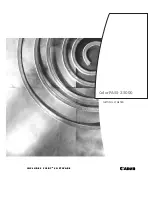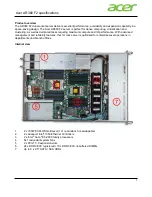
WiPort® NR Embedded Device Server User Guide
57
6: Configurable Pins
The WiPort NR embedded device server has eleven pins configurable for General
Purpose I/O (GPIO).
Use these GPIO pins to control devices such as relays, servers, lights, monitor
switches, sensors, and even processes such as data transfer.
Defaults Settings
Function: general purpose input/output
Direction: input
Active Level: low
Set the functions for the eleven pins independently and in any combination. The
initial directions (input/output) and active levels (low or high active) at boot up can
also be configured through 77FE.
This chapter describes how the directions, active levels, and states can be
dynamically controlled and probed through special port 77F0.
Features
TCP and UDP can be used.
The protocol supports up to 32 GPIO for future products.
Function configuration can be retrieved.
Input or output selection can be retrieved and controlled.
Active low or high selection can be retrieved and controlled.
Active or inactive selection can be retrieved and controlled.
77F0 can be disabled.
Every change of state (active/inactive) requires a command over TCP or UDP, and
thus is not very fast. If you use this port for data transfer, the throughput is low,
usually up to 1Kbps.
Control Protocol
The GPIO control protocol is a simple, proprietary protocol, which is described below.
Guidelines
The GPIO control protocol is described from the PC side.
Send
means from PC to
WiPort NR unit.
Response
comes from WiPort NR unit to PC.
The protocol allows for control of up to 11 GPIOs.
The parameters are four bytes long and represent GPIOs 0-31, with GPIO0 in bit 0 of
the first byte (Little Endian). Parameter bits for configurable pins not configured as
GPIOs are undefined for
Get
commands and ignored on
Set
commands.
















































